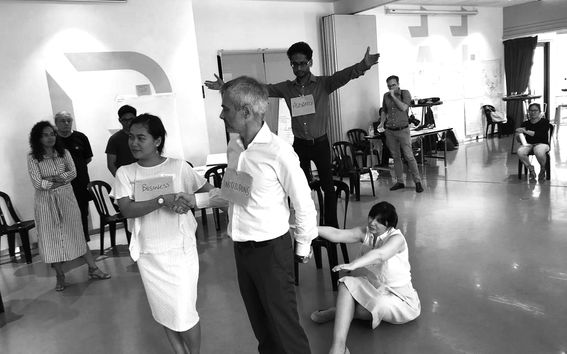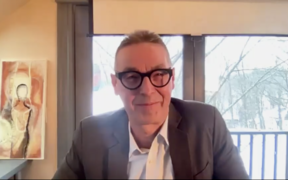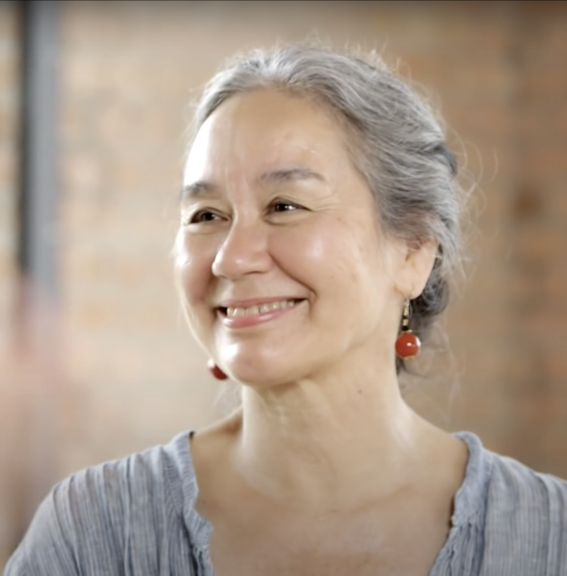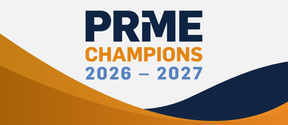Radical creativity
We enable experimental activities that challenge the status quo.

We have been aware of the planetary boundaries for more than 50 years. Why have we failed to address this pressing challenge? This question puzzled Otto Scharmer of MIT, who has studied change management with systems scientist Peter Senge and others.
In 2007, Scharmer's book Theory U: Leading from the Future as it Emerges was published. According to the theory, fundamental changes will only occur if we map leverage points and design new types of collaboration structures and operating models that support them. Awareness of a desired solution will not lead to lasting and innovative changes unless we also make structures that support the desired change.
The complex challenges related to sustainability or wellbeing cannot be solved with existing ways of thinking and efficiency-driven processes that have caused them as byproducts. Our challenge is to find a new direction for business, a role where it serves as a positive force for systemic change.
To meet complex, systemic challenges, we need new kinds of social skills: life-wide collaborative learning and unlearning. Otherwise, we will keep using the mindsets and tools of the past era, which are no longer sufficient.
|
Level 1: Cognitive learning (thinking, emotions, perception) |
Improved efficiency and performance |
Doing things better, maintaining the prevailing paradigm |
| Level 2: Metacognitive learning | Reflection on one's own actions and thinking |
Doing better things, developing the prevailing paradigm |
| Level 3: Epistemic, transformative learning (knowledge, beliefs, perceptions of reality, worldview) | Paradigm shift |
Seeing the surrounding reality differently |
Education that is mainly based on established theories and separate disciplines makes it difficult to understand systemic interconnections and changes. Knowledge and intelligence are also still often associated with logical thinking and numeral and verbal expression, which distances us and blurs our perception of the real world and its urgent challenges.
Scharmer and his colleagues have developed methods to utilise diverse intelligences to help implement systemic changes. When cognitive learning is accompanied by different modes of knowledge, such as embodied, emotional and naturalistic intelligence—a sensitive, ethical, and holistic understanding of the world and its complexities—these methods can bring out radical creativity and collaboration in people: the ability to think and act in new ways.
Through diverse modes of intelligence, we become more aware of our place in the world, not as separate individuals but in connection with other people and the planetary ecosystem.
MIT's Otto Scharmer lecture on Theory U kicks off Aalto's Capacity Building of Creative Radicals (CBCR) competence development project. The project continues with two Social Presencing Theater workshops facilitated by Arawana Hayashi and Ricardo Dutra. The methods of the two workshops aim to increase our capacity for change and our collective understanding using embodied intelligence.
'We want to try these novel methods because we believe that they offer Aalto employees the means to advance creativity and find the pain points of sustainable systemic changes,' says learning designer Maria Joutsenvirta from the School of Business, who is leading the project with collaboration designer Kirsi Hakio from the School of Arts, Design and Architecture.
The CBCR workshops are aimed at Aalto employees who are interested in self-development, transformative learning and creative leadership as ways to advance radical creativity. The future of work and work life skills are strongly connected to learning: our ability to learn together.
The workshops will use the methods of meditation, improvisation and theatre to advance collaborative understanding and make things that are difficult to express in words visible.
The aim of the CBCR project is to develop:
The purpose of the two workshops and the reflection during the time between them is to establish a common vision via systems sensing and to make hidden obstacles visible.
The methods have been developed to build trust and empathy, identify one’s own blind spots, and help to see the world from another perspective. The aim is to create a psychologically safe space to test one's own boundaries by creating favourable conditions to shake up existing patterns of thinking and behaving so we can experience and create something new as a team.
The project participants will have a unique opportunity to develop their own thinking and doing through embodied intelligence. A stronger connection to experiences, emotions and imagination will enable them to transcend the existing reality and understand different possible realities (learning from the emerging future), as well as build new interpretations and meanings.
'We’re on the verge of a whole new way of doing things, and we will step into the unknown. We don’t know yet what we will learn during this Spring. However, based on past experiences, it is clear that the utilisation of embodied intelligence often triggers fundamental changes in thinking which allow us to understand and recognise thought patterns that act as barriers to creativity', says Kirsi Hakio.
text: Tiina Toivola
In the spring of 2022, Aalto's staff will have the opportunity to experiment with transformative learning and leadership methods that advance radical creativity and the change capabilities of the community and teams. The introduction lecture is open to all Aalto employees. Log in to this page with your Aalto credentials to see the registration link below.
Aalto's capacity building project experiments with methods, which may help us become more capable of implementing systemic changes

Creative people, like artists and scientists, invent and create the new by stepping from the visible world into the invisible world of imagination, and then returning back into the visible. We all can develop our sensitivity, intuition and leadership capabilities to increase creativity.


Arawana’s pioneering work as a choreographer, performer and educator is deeply sourced in collaborative improvisation. She currently heads the creation of Social Presencing Theater (SPT) for the Presencing Institute. Working with Otto Scharmer and colleagues at the Presencing Institute, she brings her background in the arts, meditation and social justice to creating “social presencing” that makes visible both current reality and emerging future possibilities.
Arawana is a senior teacher in a global network of meditation centers dedicated to applying mindfulness to “creating enlightened society”. She teaches both meditation and art based on bringing out the basic goodness of individuals, of relationships and of society.
Ricardo is a social designer, educator and researcher working in diverse global contexts. Ricardo's work focuses around transformative learning, design research, and embodied intelligence.
Currently, Ricardo teaches Art & Design as a part of Avenues The World School's Futures Literacy initiative in São Paulo, Brazil.
Ricardo holds a MFA in Transdisciplinary Design from Parsons School of Design, New York, and is currently a PhD candidate in design for learning at the Emerging Technologies Research Lab, Monash University, Melbourne.
For more information:

We enable experimental activities that challenge the status quo.

Creative people, like artists and scientists, invent and create the new by stepping from the visible world into the invisible world of imagination, and then returning back into the visible. We all can develop our sensitivity, intuition and leadership capabilities to increase creativity.



